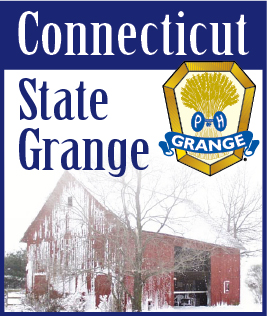| OCTOBER 28, 2010 -- 25 volunteers participated in a 90-minute training at the Norfield Grange in Weston for the Nature Conservancy's Saugatuck River Watershed Partnership's 7th annual macroinvertebrate sampling program. Nine teams of volunteers waded through chilly waters of the Aspetuck and Saugatuck rivers in three towns Saturday, October 16th, collecting samples of life forms whose presence there indicate the health of the waterways.
Macroinvertebrates are animals without backbones living in the stream bottom that are visible to the naked eye, including crayfish, mollusks such as clams and snails, aquatic worms and immature forms of aquatic insects, such as stonefly, dragonfly and mayfly nymphs.
"It entails going to local streams and collecting insects that live on the stream bottom. The type of insects they find will indicate the quality of the water -- good, bad or indifferent," said Mike Beauchene, an environmental analyst for the state Department of Environmental Protection'sBureau of Water Management. Beauchene gave volunteers background on the DEP's water quality monitoring and then gave them instructions on the collection process before sending them into the field.
He explained that some insects must have very good quality water in which to live while others are tolerant of pollution.
The dry conditions this summer influenced the sites selected for sampling, said Sally Harold, director of the watershed partnership. "We like to have them sampling at sites where there is consistent flow throughout the summer because they're looking for the organisms that live on the stream bottom. Where there's been inconsistent flow they won't be doing as well and that will change our results. The organisms are indicators of water quality. If they weren't there it might be due to a different stress, not water quality concerns and so that would unfairly skew the results," Harold said.
Volunteers used special nets to scoop up samples from various spots along their assigned stream or river site in Westport, Weston and Easton. They poured the contents into examination trays and then sifted through the water, leaves and silt for specific insects and other aquatic life. They consulted a field data sheet to identify the insects they were asked to collect and separated them into ice cube trays using tweezers and syringes.
"It's a new experience. I've never actually done anything like this. Initially, it was for extra credit, but now that I'm out here it's amazing to see what you can learn and what you can do for research," said Blakely Zecker, 17, a student in Fairfield Ludlowe High School's Advanced Placement Environmental Science program. "I didn't know you can find out about the water by the type of bugs that are out here," she said.
Zecker was teamed with AP classmates Chris Stern and Lucia Harold, both 17, who worked in the west branch of the Saugatuck off Stonebridge Road in Weston. The three also found an eel and a newt, neither of which counted toward the macroinvertebrate sampling, but the students found them interesting none-the-less.
"I got the one with the hidden legs and the body builder mayfly," said Anna Kimberly, 13, a student at Weston Middle School, as she and her sister Catharine, 15, and adult volunteer Lula Matthaei of Wilton, went through their catches from a riffle area of the Aspetuck River off Bayberry Lane in Westport.
"We really enjoy the outdoors. Our parents own a summer camp that takes kids in RVs to the national parks," said Catharine, a student at Weston High School.
Matthaei said she wanted to participate in the sampling project because conservation is important to her. Matthaei recently went through the DEP's master wildlife conservation program as part of her interest in protecting and preserving natural resources.
Harold said interest in the annual macroinvertebrate sampling program has grown each year. It began six years ago with eight volunteers and last year there were 110 volunteers. They expect about the same number this year. Another 70 volunteers have registered to repeat the process again Sunday. "Last year was the first time we did two trainings and did this two days in a row," she said.
The data collected by the volunteers is used by the DEP for water quality assessment across the state. The DEP has its own staff but also relies on volunteers to collect this information. The sampling is done in 25 different areas of the state from September through November, Beauchene said. He collects all the insects and data, analyzes them and prepares a summary report on the quality of Connecticut's waterways, which will be completed by the end of the year.
"Most of the sites have very good water quality. That's what we expect to find," Beauchene said. |
